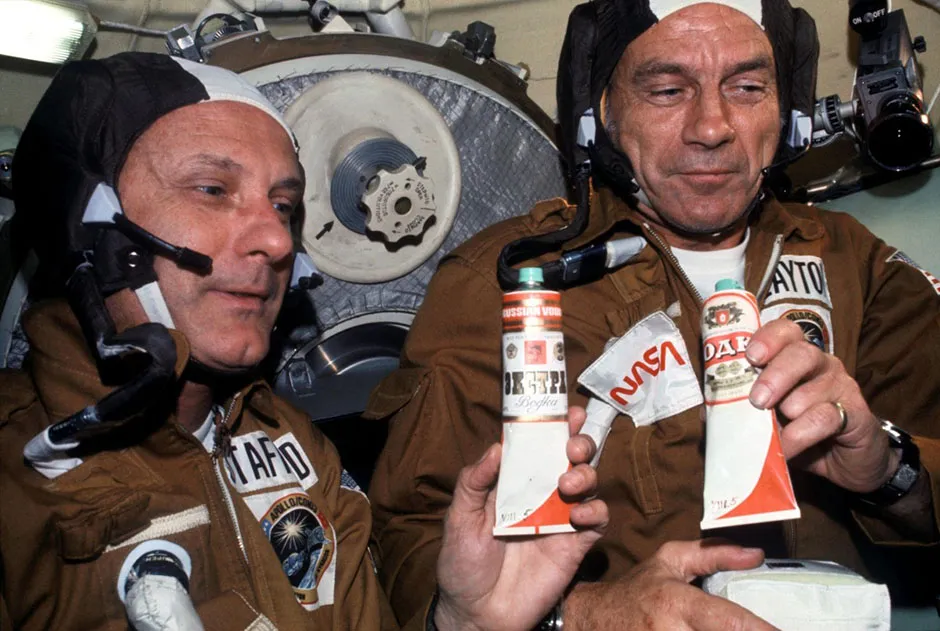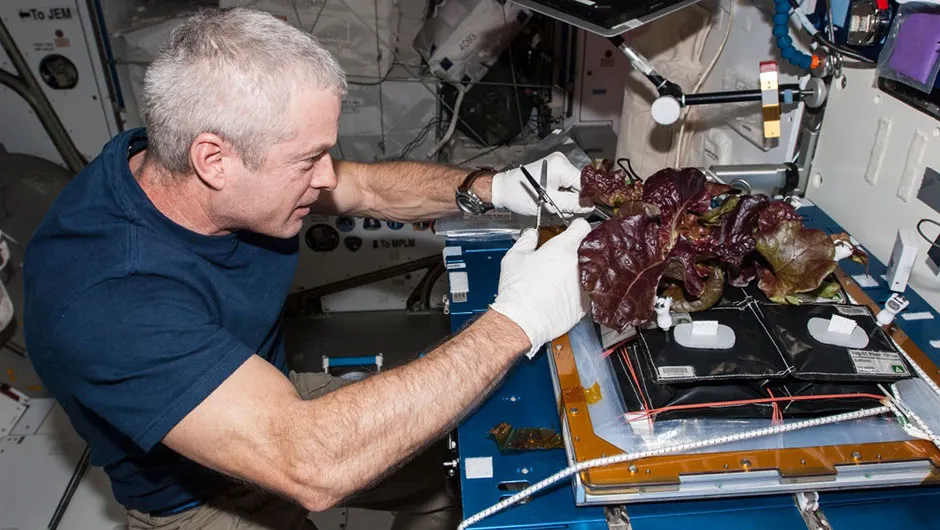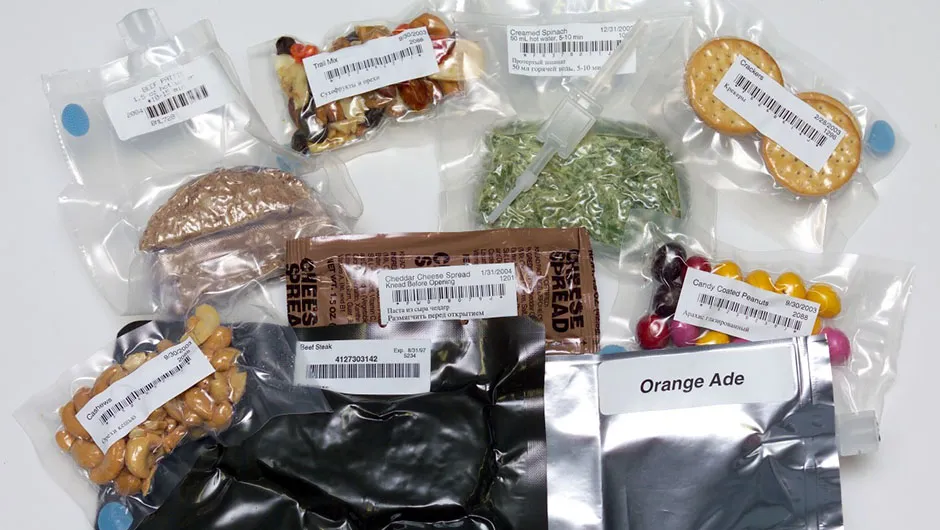While many of us may remember eating 'astronaut ice cream' on a visit to our local planetarium, astronauts’ food has improved considerably over the decades to allow for a varied and nutritious diet not too far from the freshly prepared meals many of us enjoy back on planet Earth. So what do astronauts eat in space nowadays?
Mercury Seven astronauts like John Glenn faced a diet of freeze-dried powders and edible gloop squeezed through tubes.
Apollo astronauts fared slightly better with hot water and plastic containers that could be opened to enable dining with a spoon.

Nowadays over 100 items such as fish, pasta, meat and chocolate brownies can be found on the menu of the International Space Station (ISS), while meals can even be personalised for individual astronauts.
ESA astronaut Samantha Cristoforetti became the first person to make an espresso coffee in space in 2015, for example, while UK astronaut Tim Peake’s first meal on the ISS was a bacon sarnie, which he received at the beginning of his Principia mission the same year.
Astronauts on a long mission to Mars, the Moon or other planets would have to cope with high levels of radiation, muscle atrophy, brittle bones, stress and boredom.
But to add to this, they would also face problems simply eating.

"Historically, astronauts have lost weight during flight," explains Dr Scott Smith, head of NASA's nutritional biochemistry lab.
"We know that if you lose weight during flight, you'll lose more bone and muscle, your cardiovascular system degrades more, and oxidative damage is higher."
Smith believes the problem is all down to gravity.
"Many crews have reported that they feel fine on orbit, that is, they are eating until they are full.
But they lose body mass.
We think this may be related to the fact that signals to your brain that your stomach is full might be different in space, because food may not settle in the stomach the same as it does on Earth."
Gravity isn't the only problem.
On long missions to Mars, for example, a crew may be unable to take all the food they need with them, as this would take up too much weight and space.
They would also not be able to rely on regular deliveries from Earth.
This problem requires a way of growing food out there.
But growing crops in space is difficult.

"The cold temperatures, radiation levels and low gravity mean that some type of enclosure is required to grow plants, and the basic nutrients, gases and water must be provided," says James Bevington of the University of New South Wales, who is leading a team of scientists testing how to grow crops on the ISS.
"On the Moon and Mars, you may be able to use local sources such as ice in craters or just below the surface to supply water, however melting ice and creating a warm space to grow plants takes a lot of energy so you need a good power system."
Studies also suggest that space can impair plants' immunity, something seen with astronauts too.
Bevington's team are launching a small 10x10x10cm plant growth module onboard a SpaceX Falcon 9 resupply mission to the ISS on 28 June 2018.
The scientists plan to grow genetically modified crops as a proof of concept experiment.
"Eventually, we think transgenics can be designed to overcome some of the challenges of growing plants in space," says Bevington.
"For example, you could imagine a plant that has improved immunity when in space, or a plant that produces vitamins which would be otherwise difficult to get."
NASA are also investigating this area with their Vegetable Production System (Veggie), a plant growth unit onboard the International Space Station.
Veggie produced its first crop of 'Outredgeous' red romaine lettuce in 2015, and in autumn 2017 it managed to simultaneously grow red lettuce, Mizuna mustard and Waldmann's green lettuce.

However, crop yields are low compared to plants grown on the ground, possibly because microgravity can result in an uneven supply of oxygen and water being delivered to the plants.
"I think it's important to think about growing plants vs growing enough food to sustain humans," says Bevington.
"It's easy to grow a few tomatoes in your yard, but that and growing a field large enough to eliminate your need to go to the shops are two different things."
Other scientists are looking at the problem from a different angle.
A team from Pennsylvania State University recently demonstrated that they could turn human waste - urine and poo - into food.
They fed artificial excrement into a reactor full of bacteria, which broke down the organic matter in a process similar to what happens in our stomachs.
This process occurs anaerobically (without oxygen) and results in methane and carbon dioxide being produced.
After being filtered and purified, the methane is then fed into a second reactor full of bacteria that feed on it.
The bacteria grown in the second reactor become food for the astronauts.
Although the scientists didn't taste the final product, it is being considered for human consumption.

"Other single-celled organisms, namely yeast and algae, have been consumed by humans for thousands of years," says Lisa Steinberg, a researcher who led the study.
"I imagine each would taste similar, but unique, in the same way that different types of meats do.
"A primarily plant-based diet has been proposed for long-term space missions, supplemented with protein sources including insects, grubs, and perhaps fish.
"The bacterial foodstuff we created is high in both protein and fats, which are less abundant in plants than in animals.
So this would be a good supplement to a plant-based diet."
So instead of dehydrated packets of food, future astronauts on Mars may enjoy dining on poo-fed bacteria, creepy crawlies and extraterrestrial plants.
Although it sounds unconventional at best, as long as they make sure to eat enough of it, this balanced and nutritional diet may be enough keep them fit and healthy, and self sustaining, throughout the long months of their journey.